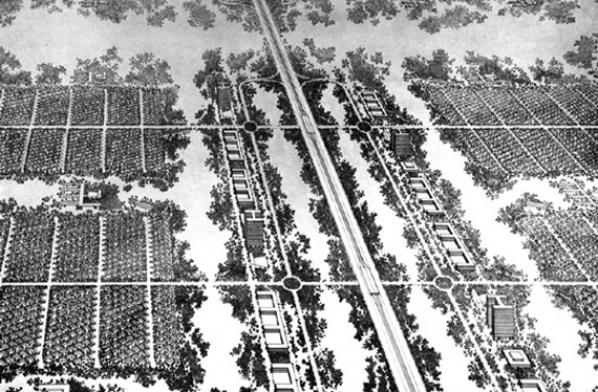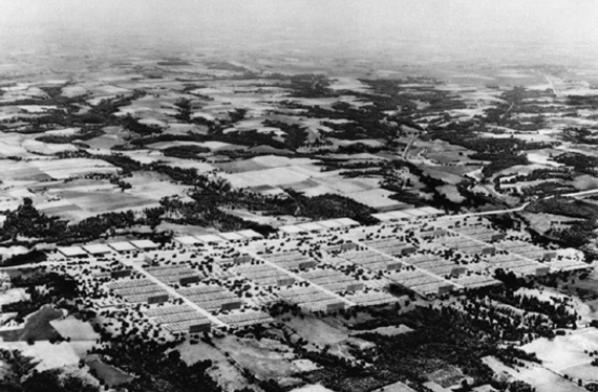The seed title of INMERSIONS collection revisits "The New City" by Ludwig Hilberseimer. This unique investigation is a radically modern proposal of territorial colonisation that relied on historical knowledge for justification and remained loyal to the unconditional alliance between the communal spirit of a small city and the pragmatic efficiency of infrastructures.
Originally published in 1944, The New City. Principles of Planning is a work of research that views historical knowledge as a justification for a radically modern proposal of territorial colonisation, unsuspecting of the unconditional alliance between the community spirit of a small city and the pragmatic efficiency of infrastructures. Thanks to the overwhelming conviction of its discourse and the captivating beauty of its images, The New City managed to spur the deep suspicions of the large metropolis characterising American urban development, a suspicion marked by the weight of ideological antecedents and above all the traumatic experience of the war that had turned European cities into catastrophic battle fields.
Various references at the proposal of Hilberseimer take us from the book The City: Its Growth, its Decay, its Future (1943) by Eliel Saarinen to Kingo Houses (1957) by Jørn Utzon. All of these share an interest in an organic approach of the city and architecture, accentuating the prevalent and optimistic course of post-war modernity in which the beautiful yet devastating graphite representations of the New City, drawn by Alfred Caldwell, produce a troubling feeling of estrangement halfway between terror and science fiction. Under this pretext, an immersion into the New City provides a unique vision of the warlike interpretation of the suburban model in which a sustainable reading of alimentary self-sufficiency did not clash with the waste of energy in dispersed urban developments. Likewise, the recovery of the prominent role of the pedestrian was not incompatible with the colossal layout of infrastructures.
The objective and positive nature of Hilberseimer’s descriptions does not hinder the scenario of pacific coexistence between city and countryside, which guarantees the success of the civil rebirth of the New City, from going back to that which needs to be conveyed. Therefore, it led to the incorporation of a discourse of fear into the urban theory in the United States, which would later be dealt with in great length by the same author in successful publications throughout the 1950’s within the hysterical context of McCarthysim.
Push & get this book here.









